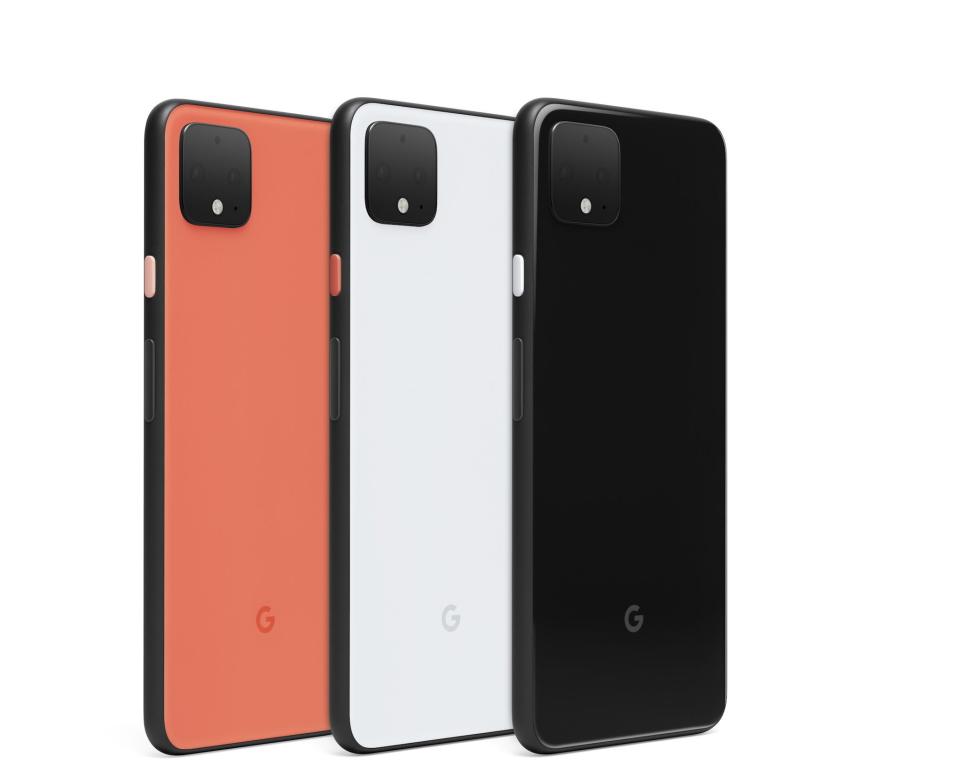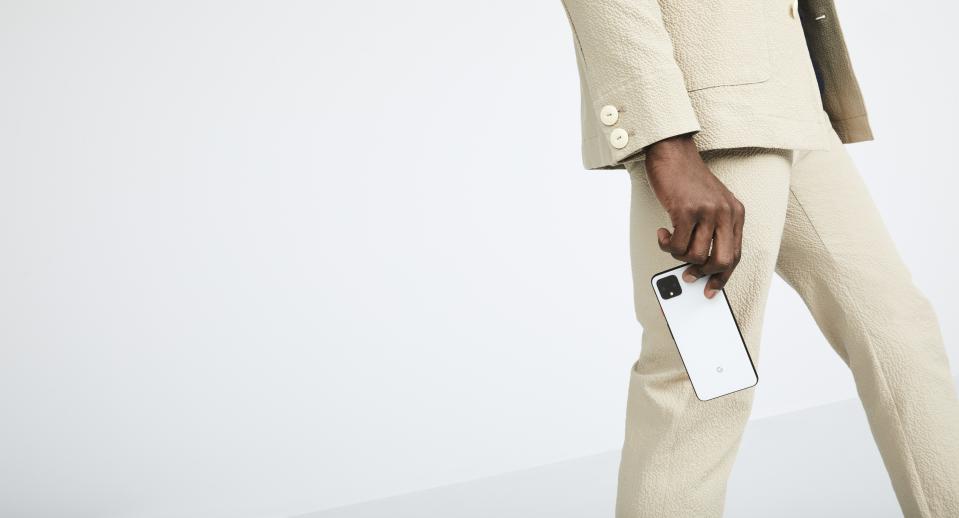The Pixel 4 Is the Closest Thing to an iPhone Killer We’ve Ever Seen
The new Google Pixel 4, a complete overhaul of its previous iteration, is a fantastic phone with a potentially best-in-class camera and some uniquely futuristic tech. But in 2019, a year of funky upscale tech and already-superlative phones, does it break from the pack enough to make you consider switching?
Let’s start with what may be the biggest feature of any smartphone at this point: the camera. Even though it has only two lenses to the iPhone’s three, the Pixel 4’s camera may be the best smartphone camera ever made. In my tests, photos taken with the Pixel looked a little better than those on the new iPhone 11 Pro in every lighting condition and context I tested it in. Whether I was snapping shots at a well-lit, newly reopened Museum of Modern Art, selfies in a dark bar, or portraits of my friends in a park, the pictures from the Pixel 4 looked sharper and more color-accurate than similar pictures on the iPhone. I was particularly grateful for how deftly the Pixel 4 handled white balance—it managed to make my apartment’s kitchen, plagued by horrendous yellow lighting, look clean and sleek. I do miss the ultra-wide-angle lens of the iPhone, but the Pixel’s AI-powered images come out better.
The most exciting, and delightfully strange, new features of the Pixel 4 are those unlocked by the addition of a radar sensor array. That chip, the product of five years of research by Google, enables motion-based gesture controls and phone responses. For example, the phone will detect whether you’re in its vicinity to determine whether its screen should display any information. Where the Pixel 3 can have an always-on screen—and the iPhone requires you to tap the screen or the power button—the Pixel 4’s radar array knows when your hand is near, and will display the time and notification icons and kickstart the facial-unlock system. That allows the phone to have what Google says is the fastest-unlocking phone ever made. I couldn’t confirm that exact boast, but I can promise you that it’s eerily fast. Sometimes the phone unlocks so quickly that it’s open by the time you’ve lifted it to your eyes.

The radar chip also allows you to control your phone by waving your hand: You can quiet and dismiss alarms and timers or skip and rewind songs. Both worked well, though I rarely found myself in a situation where waving my hand over my phone was more convenient than just hitting the next-track button or using the faster-than-before Google Assistant. For now, radar controls are more of a parlor trick, though Google says this is just the start—a kind of meet-cute while the company, and other developers, figure out more mind-bending uses.
And while face unlock on the Pixel is long overdue, the BBC reported that as of now, the Pixel 4 will work if your eyes are closed (which I was able to replicate). Conceivably, someone could take advantage of that fact to unlock the phone while you’re sleeping...or dead. (It’s worth noting that the iPhone’s face unlock doesn’t work unless your eyes are open.) You’ll have to weigh whether the split seconds you gain from the Pixel 4’s unlock are more valuable than keeping a creepy college roommate—or a coroner—from potentially accessing your data.

I think these issues are pretty minor. An ultra-wide camera would be fun, but it’s not essential. And hopefully Google will fix the face-unlock issue with a software update (for now, if you’re worried, stick to using a PIN). Having to type in a four-digit code is a small price to pay for beautiful pictures from a phone that will literally transcribe audio that I record for me. All things considered, the Pixel 4 is one of the most exciting new phones of this year. And yet, will it compel anyone besides Pixel fans to take the plunge?
In his New York Times review of the iPhone 11, Brian X. Chen made the case that we need to reset the criteria by which we upgrade our phones. “We are now living in the golden age of smartphones, when the gadgets’ improvements each year are far from seismic," he wrote. "Devices that debuted three years ago remain zippy and more than capable.”
I couldn’t help thinking about this as I tested the Pixel 4, a phone I genuinely enjoy using. One of the phone’s headline features is its beautiful OLED display with an extremely high 90 Hz refresh display (compared to the industry-standard 60 Hz). In practical terms, that means your phone will render changes on the screen much faster, making everything from split-second video games to scrolling through your Instagram feed look a lot smoother. In Google’s telling, this would be a grand step forward, similar to the launch of the high-resolution Retina Display on the iPhone 4 roughly a millennium ago (or, you know, nine years ago). But I barely notice the smoother scrolling. The 60 Hz refresh rate that’s been on every iPhone since the iPhone 6 is fast enough.
Ultimately, if you’re ready to upgrade your phone—if you’re unhappy with its performance or its battery won’t last a day—the Pixel 4 is worth considering over the iPhone 11. For $100 more, it gives you a better camera, display, and some exciting new software features that could get better with updates. But if you're not that person, if the phone you have works great, save your money. You probably do not need a new phone.
Google Pixel 4
800.00, Google
Originally Appeared on GQ


